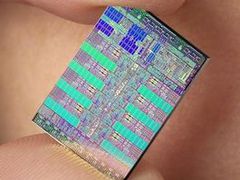You can trust VideoGamer. Our team of gaming experts spend hours testing and reviewing the latest games, to ensure you're reading the most comprehensive guide possible. Rest assured, all imagery and advice is unique and original. Check out how we test and review games here
Nano-Engineered Computing Systems Technology, or N3XT, aims to increase processing speeds by a factor of 1000, claims a Rebooting Computing special issue of the IEE Computer journal.
Current processing bottlenecks will be torn down by “integrating processors and memory like floors in a skyscraper and by connecting these components with millions of “vias,” which play the role of tiny electronic elevators,” states the report.
N3XT’s high-rise layers will enable the transmission of more data, at a much faster rate, and using less energy than possible with the current silicon chip structures.
“We have assembled a group of top thinkers and advanced technologies to create a platform that can meet the computing demands of the future,” commented Associate Professor Subhasish Mitra.
Professor H.-S. Philip Wong added: “When you combine higher speed with lower energy use, N3XT systems outperform conventional approaches by a factor of a thousand.”
Stanford computer scientist and N3XT co-author Chris Re has joined the collaborative research.
“There are huge volumes of data that sit within our reach and are relevant to some of society’s most pressing problems from health care to climate change, but we lack the computational horsepower to bring this data to light and use it,” Re said. “As we all hope in the N3XT project, we may have to boost horsepower to solve some of these pressing challenges.”
Can the similarity between N3XT and Nintendo’s NX systems be ignored? It almost certainly can.
Source: Stanford News






